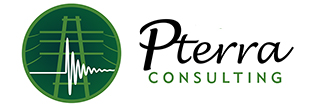(Dr. Gutierrez has developed numerous dynamic models over 30 years of working in the industry. He was previously a developer for one of the major simulation software packages and has written models for several other packages, including General Electric’s PSLF program.)
From time to time it is necessary to develop user models for equipment which do not have representation in commercial software packages for stability assessments. Emerging technologies and new equipment are typical bases for user models. Sometimes an approximate model is applied comprised of a simple “blackbox” with current/voltage input and output. In a pinch, a forced fit to an existing model may be attempted. But in most cases, developing a new user model is a necessity if the objective is to accurately assess the interaction of equipment on the power network for stability.
The dynamic model may be developed by the software supplier, or, if there are inherent confidentiality issues with the supplier, by an independent consultant such as Pterra.
Requirements
Some basic knowledge on the equipment to be modeled is very useful for developing user models. Understanding control block diagrams of the equipment including typical values for time constants and gains are required as well as basic knowledge of the software programming language that could be Fortran, C++, or other software specific language.
The equipment models are represented by mathematical equations. For instance, the mechanical model used for synchronous generators in stability commercial packages is represented by the following differential equations and associated block diagram:
|
|
 |
| Synchronous Generator Mechanical Model | |
Because of the inherent limitations in dynamic simulation packages, equipment models, both user and standard, are designed to simulate only a limited range of events. This is to say that the applications of the user model is limited and incorporates approximations. It is important to know under what conditions a user model can be used and where it is not be applicable. Often, in embedding user models in databases and passing them onto other users, the important documentation of limited applications is lost, and models can end up being used for purposes they were not intended for. The consequence is that the dynamic simulations are no longer accurate. A more disturbing consequence is that the simulation behaves erratically and even the response of accurate models within the same database comes into question.
There is an appropriate model for different study purposes. The Time Frame for Power System Phenomena and Power System Equipment Controls (click on the link to open) shows how various power system phenomena and controls relate in terms of time frames of effects. User models are carefully selected for the range of operations relative to other power system phenomena, equipment controls, and types of disturbance of interest.
Modelling
Power system equipment can be modeled by a set of non-linear algebraic-differential equations. Dynamic performance under disturbances is then analyzed by solving these equations numerically. Dynamic simulation of a power system networks thus implies two processes:
- Simulation of dynamic models; i.e., generators, exciters, governors, etc., represented by differential equations.
- Solution of the electrical network; current and voltages, represented by algebraic equations.
 The Figure at left shows the Dynamic Simulation Main Loop that is used, with minor variations, in commercial software packages for dynamic simulation.
The Figure at left shows the Dynamic Simulation Main Loop that is used, with minor variations, in commercial software packages for dynamic simulation.
For writers of user models, it is necessary to know where in the Main Loop the simulation is, and from this, the form of the input data and the expected output data. In a way, the user model forms a part of the Main Loop, and hence should be able to handle the data as it flows through from the main routines. If the user model mishandles the data, the result is either a false simulation or, worse, a failed simulation.
How then to ensure that the user model provides accurate simulation response? Given that there is a good understanding of the control processes and software interactions, a close coordination with the equipment manufacturer could help fine tune the simulation response. Writing a user model should be an exercise in practical modeling rather than theoretical.
Another aspect of modeling for dynamic simulation is the proper selection of controls and interactions to include in the model. For stability, higher order or frequency effects may be interesting but ultimately not have an impact on stability performance. A overly complicated model that captures all manner of dynamic response is no better than a simplified model that captures the essential response. Although this discussion seems to imply that much judgment is applied to selecting components of the model, in fact, there are basic criteria for selecting control components. Robust response within the size of the time step, and in relation to the other controls included in other models is an important determining factor. High frequency effects and voltage-sensitive models can lead to numerical failure or propagating error.
Conclusions
Emerging technologies and new equipment require an adequate representation in dynamic commercial software packages for stability simulations. Writing these models demands knowledge in a specialized field. Models take time for developing, debugging and testing. As with any software, there are good models and bad models. The effect of a bad model is not limited to the simulation of that model, but can propagate to other models in the database leading to a failed simulation.
References:
- L. L. Grigsby (Editor-in chief), The Electric Power Engineering Handbook, CRC Press and IEEE Press, 2001.
- P. Kundur, Power System Stability and Control, McGraw-Hill, Inc., 1994
- General Electric’s PSLF User’s Manual Version 15.
For questions, comments and further discussion, contact us at info@pterra.us
